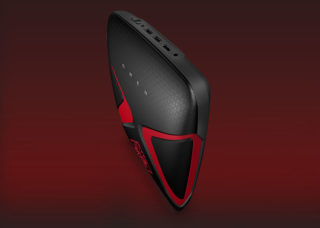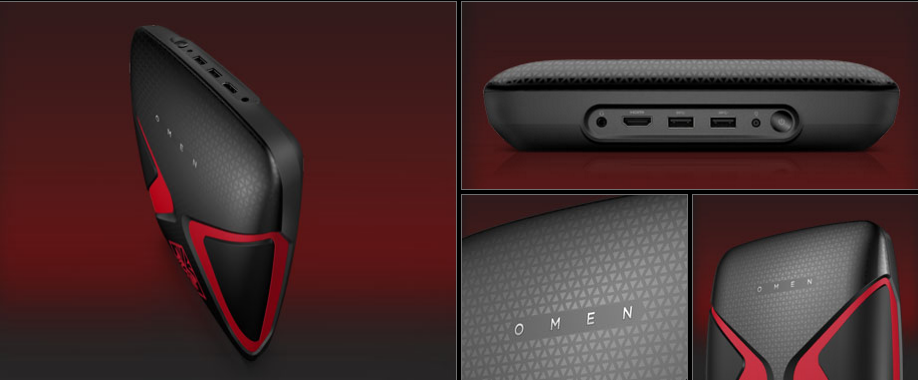One of the problems plaguing room-scale virtual reality is that people need to be tethered to big, bulky headsets and desktop computers with wires dangling at their feet during their experiences.
But don’t trip, because HP is untangling this problem by introducing the HP Omen X VR backpack, a purpose-built backpack that is taking a sizable step in offering optimal VR experiences.
The compact backpack, currently a prototype, weighs less than 10 pounds and carries two batteries that has enough juice for a full hour of VR immersion; a wireless display, mouse and keyboard are part of the package, too. The best part? It doubles as a portable and powerful compact PC for all your needs. The full-powered gaming desktop will give owners of the HTC Vive and Oculus Rift a full untethered experience.
Rick Champagne, worldwide segment manager for media and entertainment for HP Z workstations and VR Displays, joined [a]listdaily to discuss the innovative platform.

How is HP positioning itself in the VR space?
There are two sides to VR—content creation and consumption. HP has been in the film industry for over 75 years. HP’s John Frederick, Bob Myers, Karl Rasche and Tom Lianza have even been honored with a Scientific and Engineering Academy Award for our HP DreamColor Display technology. We’ve been in the industry a very long time, and HP Z workstations are a platform of choice for people in the film and games industry. Now those workstations are being used for VR content creation. Then we have our consumer and gaming group focused on the consumption of VR with the Omen X Backpack and HP Phoenix desktop computer. We’re looking at VR from a holistic point of view, not just the consumer side of it.
What is the idea behind the Omen X Backpack? How did it come about?
Really, the problem with VR right now is the tether. You’re attached at the head with a cable and if you’ve seen people doing VR experiences, particularly if you come to a trade show, we have handlers that will hold the cable and make sure you’re not tripping on it. That’s not feasible in your living room, or in any room-scale VR volume. We want to get rid of the cable completely so you can just be immersed. Of course, we had to do something that was purpose-built and super-high performance.
What does a product like this do for VR? How does it get people to want to experience the technology even more?
We’re still feeling out the market and getting a better understanding. You can imagine that there’s so many commercial applications like this where you want an untethered experience, like a VR entertainment center. Anything like movie theaters, theme parks, concerts, sporting events, or any kind of place where you would have a commercial setting . . . you can’t handle everybody. This is just going to allow people to roam around freely in a VR experience. We’re still learning. We’re going to get the form factor smaller; we’re going to get higher performance, and longer battery life. VR is changing, so we’re going to keep pace with the industry. We’re going to continue to focus on things like heat management and customization so people can go in and change things up as the industry grows. Since we announced the backpack, it’s created a lot of conversations and we’re excited by what the future holds.
What are some of the marketing opportunities that this opens up that were somewhat non-existent before?
This is not a cosmetic model; it’s real working hardware and we showed it at Siggraph just last week. This is definitely an eye catcher; it’s a conversation starter, and it has a real function; it solves a real problem, so we’re really excited about that.
How are you reaching consumers with experiential marketing?
At VRLA earlier this month, we worked with BlackBoxTV, FullDomePro and an experiential artist, Android Jones, showing some of the work that he’s done specifically with creating immersive experiences. His HTC Vive experience called MicroDoseVR is like Tilt Brush, but it’s a particle-based system that anyone can use to create unimaginable art.
How do you see VR developing? How will the industry keep growing?
Cost is one of the things—it has to come down to make VR accessible for more people. It’s expensive today to get a system that’s high enough to power VR. We have consumer solutions designed with the consumption of VR in mind. We of course have our HP Z Workstations for the creation piece of it, and so as cost comes down, it will become more accessible. You’ll see consoles like PlayStation VR coming out, too. All of those things are converging right now, so we have to be ready. The industry has to be ready, and the content has to be ready for this major shift that’s about to happen.
Do you think consumers are ready for VR?
The content creators are already working on the problem. They’re creating very rich environments that allow consumers to connect with the content in ways that were never possible before. The GPU manufacturers are innovating at a pace that is unprecedented, and there’s an intense battle being fought there too. A lot of amazing technology is being created in our industry. Everything from advanced rendering to light fields, and just dealing with heavy amounts of data in a 360-degree environment. Everything is coming together. Next year is going to be the year of VR. It’s going to be a new world.
Follow Manouk Akopyan on Twitter @Manouk_Akopyan

